Rishad Tobaccowala's Blog, page 17
November 20, 2022
Community.

Photography by Michael Kenna
In her book Retirement and Its Discontents, Michelle Pannor Silver’s research reveals that for millions of people work is much more than output or income they generate. It is a source of meaning and social identity. It is where they feel intellectually stimulated and can express their creative selves. It is where they feel a sense of community and connection.
If organizations lose these attributes, they will struggle to attract and retain the best talent. Admittedly, this is a challenge when they feel in a mad competitive scramble and think that only by devoting all their time and money to data, measurement, and the like can they survive. At the same time, they need to find a middle ground, a place where they make room for story, for meaning and identify. If they lose these crucial elements, what does it matter that they can measure stuff in nanos?
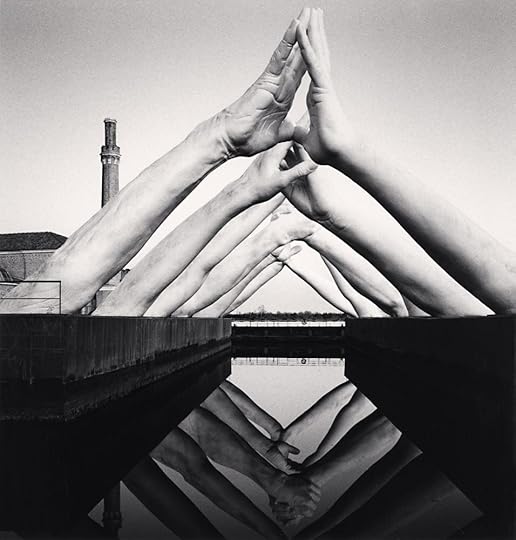
Photography by Michael Kenna
The Importance of Community at Work.People are looking for work to provide a sense of community as never before. In a Harvard Business Review article, Lori Goler, and her colleagues identified three factors as necessary for job satisfaction: career, community, and cause: “Community is about people; feeling respected, cared about and recognized by others. It drives our sense of connection and belongingness.”
You might think that community is only important to certain types of people holding certain types of jobs in certain countries. Goler, however, found that community (as well as the two other factors) transcend types. In fact, on a 5.0 scale, engineers rated the importance of community as 4.18—a surprisingly high rating from a group that is often thought of as idiosyncratic loners.
Think about community as a forum for storytelling in the broadest definition of that term. In any organization where people have a strong sense of community, they also are constantly telling and listening to stories—stories about the behavior of bosses, about the machinations of teams, about the heroic efforts of one leader and the villainous actions of another. More than that, stories about the organization reside in all employees’ heads.
A major merger with a competitor a few years ago is analogous to a historical treaty signing between formerly warring nations—this event and everything that led up to it is embedded in people’s consciousness.
The multiple stories of an organizational community provide people with common language, ideas, and personalities, offering a narrative of which they are a part. As Goler asserts, community fosters a sense of “connection and belongingness,” and these positive attributes emanate from the ongoing organizational story.

Photography by Michael Kenna
The Loss of Deep Engagement.Companies used to talk about their people as family. In the wake of downsizing and in workplaces where people work remotely, travel constantly, and change jobs frequently, family no longer seems an appropriate term. But should workplaces be the opposite of family—impersonal environments where people measure their satisfaction by the size of their paycheck and bonus?
To address this question, let’s start with the highly influential paper“Measuring Meaningful Work,” which examines several studies and concludes that this type of work is aligned with passion and seen as a higher calling; growth in a job and making a difference in the world represents a greater purpose than income.
Similarly, CEO Tony Schwartz identifies twelve attributes of a great workplace and notes that a key to these attributes is standing “for something beyond simply increasing profits. Create products or provide services or serve causes that clearly add value in the world, making it possible for employees to derive a sense of meaning from their work, and to feel good about the companies for which they work.”
Most organizational leaders probably agree with these notions of meaningful work, at least in the abstract. Yet, many don’t create the necessary conditions. Willis Towers Watson, a global advisory firm, found that two out of three workers were not fully engaged at work, with almost one-fifth completely disengaged.
“The most significant factors relate to how their supervisors support them on the job, their levels of stress and the severity of their workloads. For the detached, by contrast, company leadership stood as the focal point. Detached workers lack an emotional connection to the organization, stemming from feelings that they do not work for a company with strong values, clear vision, and a leadership team that takes employees’ interests and needs into account”

Photography by Michael Kenna
Architecting Emotional and Physical Landscapes.Organizations possess a lot of physically and emotionally detached workers these days. Think of it from a landscape perspective. There’s the physical landscape of homes, offices, off-site meeting spaces, and so on.
There’s also the emotional landscape of relationships with bosses and fellow employees.People feel spaces and connections both emotionally and physically, and therefore sculpting environments are key for establishing meaning and purpose. These spaces whether they be emotional or physical (whether it be an office, an event or an off-site) where the culture of a company is created and sustained.
In these spaces, stories are told; stories about values as relates to customers, employees, communities, and shareholders. Stories about the company’s founders, how it was founded, and why it exists beyond creating products and services. Stories that employees create as they find purpose and growth and meaning.
These stories are lost, or at least diminished, when people fail to get together in-person on a regular basis or fail to feel emotionally safe to speak up and share stories. When they’re enmeshed in data, working remotely, transfixed by screens and not fully present for other reasons, people don’t tell or hear the stories that imbue the workplace with meaning.
Companies will need to combine working from home, the office, events and experiences in different ways for differently experienced people and jobs to balance the benefits of distributed and in-person interaction. They will not be a single model for every firm or level and in the differences will be the challenge and where the magic of managing will lie.

Photography by Michael Kenna
Robots Compute. People Dream.At a time when people change jobs with almost the same regularity with which they change their passwords, community keeps people loyal to their organizations. More than that, in a volatile, uncertain world of work, it provides certainty and satisfaction. We need to be aware that in our rush toward all things digital, we’re endangering this sense of community.
In author Don DeLillo’s landmark novel Underworld, he writes:
I was driving a Lexus through a rustling wind. This is a car assembled in a work area that’s completely free of human presence. Not a spot of mortal sweat, except, okay, for the guys who drive the product out of the plant—allow a little moisture when they grip the wheel. The system flows forever onward, automated to priestly nuance, every gliding movement back- referenced for prime performance. Hollow bodies coming in endless sequence. There’s nobody on the line with caffeine nerves or a history of clinical depression. Just the eerie weave of chromium alloys carried in interlocking arcs, block iron and asphalt sheeting, soaring ornaments of coachwork fitted and merged. Robots tightening bolts, programmed drudges that do not dream of family dead.
This paragraph has stayed with me for a long time, particularly these three
lines:
Hollow bodies coming in endless sequence.
There’s nobody on the line with caffeine nerves or a history of clinical depression.
Robots tightening bolts, programmed drudges that do not dream of family dead.
All industries are becoming increasingly automated. While DeLillo’s book described robots in an auto plant, we now see robots of some type nearly everywhere.
With the dawning of AI, the rise of intelligent objects with the Internet of Things, and new interfaces such as voice, A/R and V/R we will see our workplaces augmented, encrusted, and infested with machines of every type.
In today’s distributed workplace, where we interact across screens with machines that spew data that is collated and compiled by computers, how do we maintain a sense of community?
November 13, 2022
Messiah Karma.

During the past two weeks a few “Messianic” figures have imploded or are in complete melt down mode.
Kanye West in the world of music whose business and reputation have cratered as he went on a verbal rant of great rage.
Sam Bankman-Fried the CEO of FTX who transformed from being a face and savior of the crypto industry to losing most of his wealth overnight and potentially facing jail time for fraud.
And then there is Elon.
While Kanye and Sam have imploded we are viewing the rapid decaying of Elon Musk who is running a master class on value and reputation destruction one tweet at a time.
And further afield in Russia is Mr Putin who is destroying lives, economies and reputation at the end of a long long table.
 A Messiah or God Complex
A Messiah or God ComplexWhat is a Messiah Complex?
From Wikipedia :A messiah complex is a state of mind in which an individual holds a belief that they are destined to become a savior today or in the near future.
What triggers a God complex?
It can manifest as a justification to behave a certain way or take a particular course of action that is unethical and even dangerous. Similar to many other mental disorders, the exact cause of this complex is not known.
 Messianic Traits.
Messianic Traits.Messiahs share three common traits.
1. The Rule of Law is not for them: Contracts do not matter. Financial regulations are for the birds. Other people are lower level creatures who do not have rights. Borders are decided on personal predilections.
2. Incestuous Thinking: Get high on their own fumes. View everything from narrow perspectives. Do not listen to other perspectives.
3. Sycophantic Choruses: They surround themselves with yes-people who aid, abet and re-enforce their worst impulses and behaviors. Anyone who disagrees is banished. Often fawning press furthers their self-regard by echoing that they are just awesome in every way.
 The turd at the head of the table.
The turd at the head of the table.In one of the most popular posts of this though letter called “The Turd on the Table” best practices on addressing tough issues such as calling out that the moist brown thing on the table is not a brownie but a piece of excrement are discussed.
Companies and leaders that do not create an environment where mistakes and bad behavior can be discussed are doomed to great problems (Wells-Fargo opening fake accounts is an example).
But what happens if the turd sits at head of the table?
The dear leader is the problem which will end up costing everyone dear.
This is a far more difficult challenge which is why many leaders who are not constrained by boards, advised by truth tellers or who look for data that does not support but challenges their beliefs, destroy not just themselves but create massive havoc in peoples lives and significant financial destruction.
 Avoiding the Karma of Self-Defeat.
Avoiding the Karma of Self-Defeat.Most messianic leaders end up defeating themselves by stretching things too far.
Napoleon stretched his resources too far by opening the the Russian front.
Bankman-Fried stretched the truth and line between FTX and Almeida so there was no line.
Musk is twittering too much and is now frittering so much.
If one believes one sits as God in heaven above all , does not see other points of view and is surrounded by a chorus of enablers, sooner or later hell arrives.
Successful individuals and companies should learn from these tragic stories and damaged people in the following ways:
1. Diversity: Diversity of backgrounds and thinking particularly in leadership teams are critical. If everybody thinks the same way, it can be dangerous. Disagreement and challenging points of view is what boards, external perspectives and independently successful people bring to a company or to a person.
2. Building a case for the opposite: Whenever a key decision needs to be made a team or individual should be charged with building a case for the exact opposite of what you as an individual, a leader or board are considering. This provides two benefits. First it allows one to make sure that group think does not disconnect us from reality since there is a reminder that we may be wrong. Second it helps us correct gaps in the thinking of our original recommendation. It is like stress testing our proposition.
4. Remember the future comes from the slime and not the heavens: There are many benefits of being a leader, working at a very successful company and being on the top of the world. Everybody wants to meet with you or think you are cool because of the fame and reputation of your company. The press fawns and friends’ gush. It gives us all a great rush.
The future usually does not emerge from the gatherings at Davos, The Allen Conference or at TED but where no one is looking or visiting. The Auto companies were looking at each other and they missed Tesla and Uber. Procter and Gamble missed Dollar Shave Club. IBM missed Microsoft. And today TikTok has more engagement than every Facebook property combined (Facebook, Instagram, and WhatsApp). So, let’s meet the crazy folks who have an idea, go off the beaten path and not take ourselves too seriously.
Or let us remember just one characteristic to minimize self-defeat.
Humility.
November 6, 2022
On Poetry.

Photography by Rishad Tobaccowala
“Poetry is accelerated thinking.”
“Poetry is the best words in the best order.”
“Poetry is stored magic.”
“Poetry restores us to what is deepest in us. It consoles us.”
“The greatest poetry is written at the borders of what can be said. It makes a strong effort at expressing the unsayable.”
“The meaning of poetry is to give you courage.”
“The purpose of poetry is to remind us how difficult it is to remain just one person.”

Photography by Rishad Tobaccowala
The impact of reading poetry.“A poem pierces the shimmering surfaces of the modern world and somehow penetrates the core of reality itself.”
“If I read a book and it makes my whole body so cold no fire can ever warm me, I know it is poetry. If I feel physically as if the top of my head were taken off, I know that is poetry. These are the only ways I know. Is there another way? “
“In an old book. I stumbled across a saying.It was like a stranger.Punching me in the face.”
“Implicit in poetry is the notion that we are deepened by heartbreaks, that we are not so much diminished, as enlarged by grief, by our refusal to vanish-to let others vanish-without leaving a verbal record. Poetry is a stubborn art.”
Most of all it gives us the courage to speak up and to recognize authentic voices..
“Where the voice that is in us makes a true response. Where the voice that is great within us rises up”
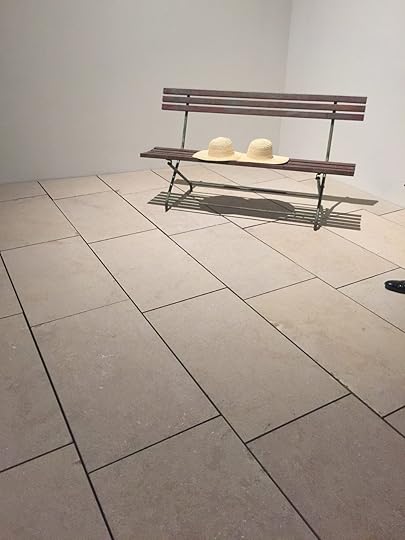
Photography by Rishad Tobaccowala
Poetry reminding us of what we need today.Kindness
by Naomi Shihab Nye
Before you know what kindness really is
you must lose things,
feel the future dissolve in a moment
like salt in a weakened broth.
What you held in your hand,
what you counted and carefully saved,
all this must go so you know
how desolate the landscape can be
between the regions of kindness.
forever.
Before you know kindness as the deepest thing inside,
you must know sorrow as the other deepest thing.
You must wake up with sorrow.
You must speak to it till your voice
catches the thread of all sorrows
and you see the size of the cloth.
Then it is only kindness that makes sense anymore,
only kindness that ties your shoes
and sends you out into the day to gaze at bread,
only kindness that raises its head
from the crowd of the world to say
It is I you have been looking for,
and then goes with you everywhere
like a shadow or a friend.
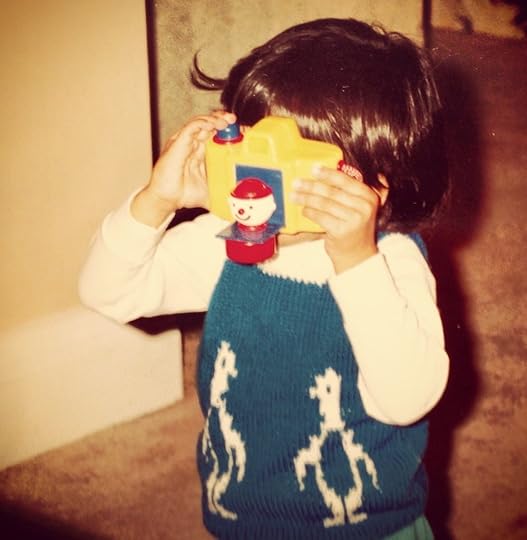
Photography by Rishad Tobaccowala
Poetry and the beat of timeFrom Sunlight on Garden
By Louis MacNeice
The sunlight in the garden
Hardens and grows cold
We cannot cage the minute
Within its net of gold
Lines on a young lady’s photograph album
By Phil Larkin
At last, you yielded up the album, which
Once open, sent me distracted. All your ages
Matt and glossy on the thick black pages!
Too much confectionery, too rich:
I choke on such nutritious images.
My swivel eye hungers from pose to pose -
In pigtails, clutching a reluctant cat;
Or furred yourself, a sweet girl-graduate;
Or lifting a heavy-headed rose
Beneath a trellis, or in a trilby-hat
Those flowers, that gate,
These misty parks and motors, lacerate
Simply by being you; you
Contract my heart by looking out of date.
In short, a past that no one now can share,
No matter whose your future; calm and dry,
It holds you like a heaven, and you lie
Invariably lovely there,
Smaller and clearer as the years go by.
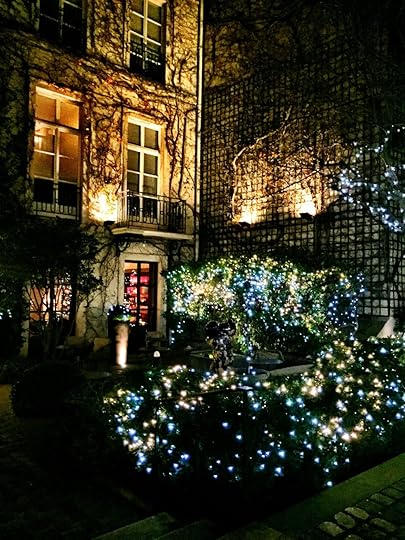
Photography by Rishad Tobaccowala
Poetry’s application to current events.Shakespeare on social media.
All the world’s a stage.
And all the men and women merely players.
The all have their exits and entrances
And one man in his time plays many parts
Seeking the bubble reputation.
William Wordsworth on the competitive world of work and consumption.
The world is too much with us.
Late and soon
Getting and spending
We lay waste to our powers.
Yehuda Amichai on this past week’s events at Twitter
Here is a poem written nearly 10 years ago (with two phrases removed and nothing else changed) that serves as an elegy and lamentation for this week’s events at Twitter.
A Pity, We Were Such a Good Invention
They amputated
As far as I am concerned
They are surgeons. All of them.
They dismantle us.
Each from the other.
As far as I’m concerned.
They are all engineers. All of them.
A pity. We were such a good
And loving invention.
An aeroplane.
Wings and everything.
We hovered a little above the earth.
We even flew a little.
October 30, 2022
Why Men Win at Work.

Gill Whitty-Collins graduated from Cambridge University and went to work at Procter and Gamble where she rose to Senior Vice President of P&G’s Beauty business overseeing all of Europe, India, The Middle East, and Africa before she retired.
During a conversation about her best-selling book “Why Men Win at Work” Gill made the case that women should have 50% of the most senior roles in companies because women are 50% of the population and the data unequivocally shows that they are equally intelligent and competent and have equal leadership ability. So, targeting 1 woman on a Board or Executive team is simply ‘tick the box’ tokenism and shows that one does not understand or believe that equality and diversity drives stronger teams and better business performance.
Today in business, politics, and many other areas less than ten percent of top leadership are women.
Also, despite half of most new hires being women and many best efforts she does not believe she will see gender equality in her lifetime.
In fact, Gil believes that hybrid work may be a disaster for gender equality (a perspective shared by Tom Standage the Deputy Editor of The Economist who has also been contemplating the issue).
Despite these hurdles Ms. Whitty-Collins reminds us that companies that do not leverage, empower, and promote women are likely to lose in the marketplace and shares best thinking and practices on how to do so.
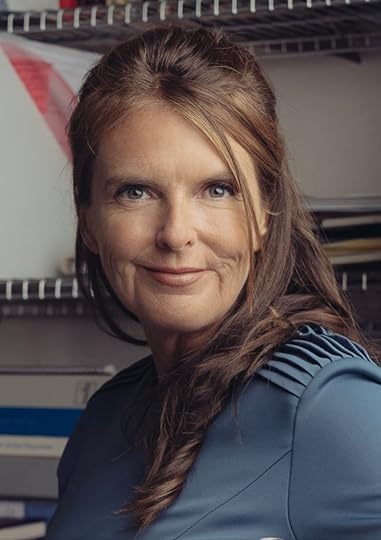 The challenges women face.
The challenges women face.Gill notes four challenges women face in rising to leadership positions.
These are company culture, “confidence vs competence”, the Umbrella theory and the “Mini-Me” syndrome.
Company Culture at the most senior levels are often dominated by men and women to adapt become something they are not and lose their sense of authenticity and comfort. Like a fish who is not aware of water many organizations that are dominated at the very higher levels primarily by men are not aware of the environment they create.
Confidence vs competence: Competence while important is not enough. People feel and like those who are confident. For a variety of reasons women have tended to be less comfortable projecting confidence. If employers do not look behind the “confidence curtain” they may choose the more confident man and overlook the more competent women. This “confidence” is often manifested in meeting rooms where men often dominate the discussion and are seen as stronger leaders and contributors.
Umbrella Theory: According to Whitty-Collins a disproportionate number of women believe “my work should speak for itself” and fail to understand that it is like doing one’s work under an umbrella as management looks down on the troops. It is critical that occasionally the person merchandises themselves and their work. Doing great work is not good enough. The work needs to be visible, and the worker needs to be known. For a variety of reasons men have tended to be more comfortable at doing this.
Mini-me syndrome: This is what Gill calls the tendency of men to support younger versions of themselves, allowing the self-fulfilling prophecy that men are more likely to make it keep fulfilling itself.
It is important that all of us and companies are aware of the impact of culture, the confidence curtain, the umbrella theory, and the mini-me syndrome to detract from goals of ensuring representation of women in the upper echelons.
 Why hybrid work may be a disaster for women.
Why hybrid work may be a disaster for women.This is provocative because the ‘easy’ perception is that hybrid work is a good thing for women.
And it should be in theory - but the issue is that, for lots of reasons, men will be less likely to leverage it and women will suffer from the resulting presenteeism & visibility bias (the Umbrella Theory multiplied).
During Covid-19 a range of studies showed that women were more negatively impacted by the pressures of caring for family and career and more senior women dropped out of the work force than men did. Here is one of a series of articles on the challenges women face in today’s post Covid environment.
As companies move to hybrid work employers should be conscious of this and have policies & practices in place to ensure it doesn’t become hugely gender biased.
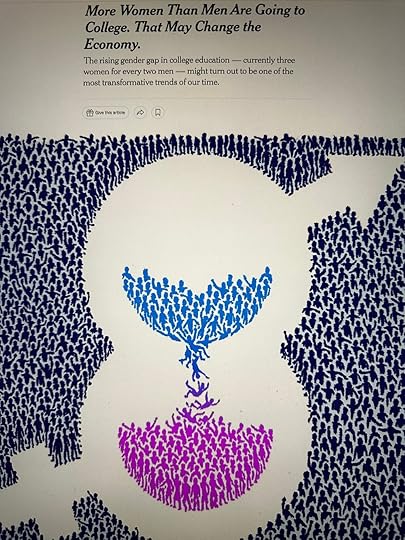 Companies that don’t ensure women make up their fair share of leadership will lose to ones that do.
Companies that don’t ensure women make up their fair share of leadership will lose to ones that do.The companies with the best talent aligned against common goals will win in the future landscape.
With women accounting for half of all talent and the number of working age folks declining in the Western World, companies who do not leverage the potential of half the work force are likely to suffer.
In addition, the Millennial and Gen-Z employees and recent graduates from schools (where women are enrolling at a higher rate) are looking for future forward companies.
Gill has many more insights and perspective which can be found below. It is thirty minutes that will make you see and think differently about the future of the workplace: (Consider subscribing to What Next? on every major platform. It has world class guests. Is edited down to 30 minutes. And is free. No fees. No ads. )
October 23, 2022
The Three Keys: Data. Trust. Intent.
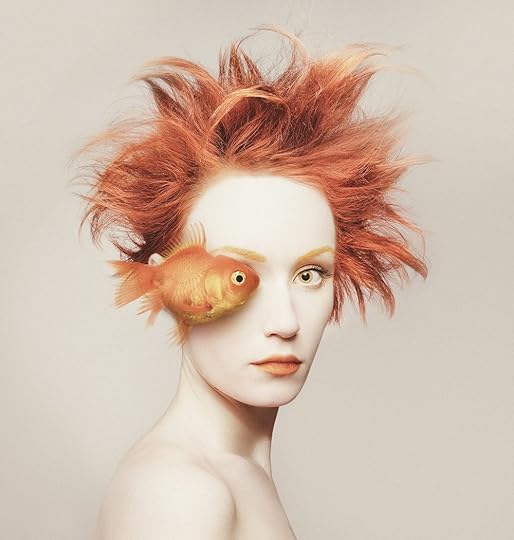
Photography by Flora Borsi
Mike Donohue a colleague of over 30 years during his 4A’s (American Association of Advertising Agencies) and ANA (Association of National Advertisers) career embraced the emerging digital world and was a cheer leader for many of the first pioneers in the space. A few years ago, he casually noted that to be convincing one needed a four, five and six letter word.
Data.
Trust.
Intent.
I began to think more about this statement and have come to believe that in today’s hurly burly and polarized word we could all benefit from asking whether our arguments, points of view and sales pitches reflect these criteria.

Photography by Flora Borsi
Data.Today we live in a data driven age. So much so that people refer to data as the new oil (though the value is in the refining of this oil and not the oil itself, but that is a different story) and every company is fixated on a data strategy.
Data today is a magic illuminant in that it reveals as many questions as it answers and shines a light on co-relationships, we may have not been aware of.
As importantly, if we do not incorporate facts and numbers into our thinking it is highly unlikely that one can will either be correct or convincing.
Being comfortable with data and leveraging its use is a key to impact today.
But it is key to remember two other things when leveraging data.
While data is necessary it is rarely sufficient for a competitive advantage since almost every firm has access to most of the same data and it is how one extracts math from the meaning that creates value and insights.
Secondly, we should not overly fixate on data since human beings select with their hearts and use numbers to justify what they do and so many times different people looking at the same data come up with different conclusions.
So, we need more than data and facts to be persuasive.

Photography by Flora Borsi
Trust.Larry Light once wrote that we should not confuse truth and trust: truth is a fact; trust is a feeling.
While we are surrounded by algorithms that are data driven, digital and operated on silicon chips, we should never forget that people are analog, carbon based and feeling driven.
If someone does not trust us it does not matter how much data, we bring to the fight. We are likely to fail to convince them to see things our way.
Today, many tech companies and others are rightly focused on winning back trust.
On the other hand, if one is trusted the person or team you are trying to convince will fill in the gaps of the missing data with the emotional bond or past history, they have with you or your reputation.
Trust not only enables for decisions without complete data but also something else.
Trust is speed.
Many people who often get things done fast do so without resorting to deep decks filled with rows of numbers.
Things move fast because they engender trust.

Photography by Flora Borsi
IntentThere is the story and then there is the back story.
If your story is built on data and the storyteller has trust than we should assume impact, right?
Not necessarily because the listener, buyer, and decision-maker are also looking for or running in their mind a back-story.
The back-story is what is motivating the speaker/seller and what is animating these numbers.
What is the intent?
Is the intent one that is more than a sale or a transaction? Is the intent selfish or one of mutual success? Is this a move among other moves and are you pawn on a chess board, or can you see the play?
Good data leveraged by a person that has trust must also have good intent to have impact.
To ensure clear intent it helps to be transparent about one’s goals, incentives, and metrics of success.
Meld the back story and the story in the foreground by signally clear and good intentions that are mutually beneficial.
So, as we try to convince someone to align with our point of view or to make a decision in our favor, we should not forget we will need the four, five and six letter words.
Data. Trust. Intent.
October 16, 2022
...

We are all salespeople.
One does not need to be customer facing or have sales in our job requirement to understand the importance of being skilled at persuasion.
Whether it be to convince people about our point of view, get them to accept our recommendation or even attract a partner we all need to be able to sell.
Over years of observing people who not only are great at sales but do so in ways that feed, build and nourish strong ongoing relationships while also building goodwill, reveal four common practices:
Understanding needs: 8 Expectations.
Leveraging the concept of SAVE: Solution. Access. Values. Experience.
Unearthing answers the using a photography Metaphor: Frame. Illuminate. Edit.
High Impact presentation: Short. Punchy. Unforgettable.
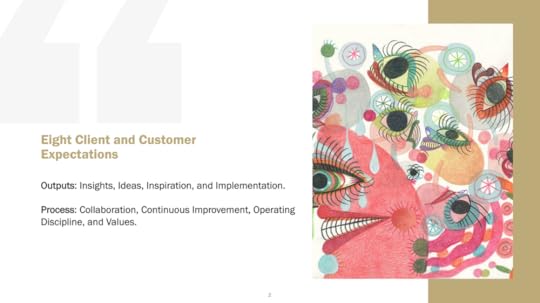 Understanding Needs: Eight Expectations.
Understanding Needs: Eight Expectations.Four of these expectations are focused on outputs and outcomes and four of them focus on process or how the partner works.
Outputs: Insights, Ideas, Inspiration, and Implementation.
Process: Collaboration, Continuous Improvement, Operating Discipline, and Values.
Insights: Clients pay the highest premium in not just economic value but their attention and their admiration to firms that bring them insights about their customers or their business.
Inspiration: External suppliers and partners see a world different than a client. Most work across different industries and have a different employee mix. Clients in these changing times want to know how they benchmark against the best. Not just their industry, but across industries.
Ideas: In the end despite debate as to whether they pay adequately for ideas, every client cares a lot about ideas and without a good flow of them it is hard for an outside partner to remain valuable.
Implementation: Eventually insights, inspiration and ideas mean little if they cannot be implemented in the marketplace. Clients look for firms that have the skills either internally or thought tight partnerships to yield tangible programs, products or services into the marketplace in a cost-effective timely manner.
While insight, inspiration, ideas, and implementation are the wings of a healthy partnership, there are some processes or ways of working that are as important and often can carry a relationship when the ideas, insights, ideas, or implementation are wanting or can challenge a partnership when not present even if ideas, inspiration, and insights are flowing
Collaboration: Clients hate (and it is not too strong a word) the lack of collaboration between their various partners. They resent having to baby sit grownups who cannot play together. They see the friction as a loss of time and economic value.
Continuous Improvement: In a world of change, businesses ask if the outside partner is continuously improving themselves. Are they remaining curious, challenging the status quo, and leveraging technology or other efficiencies costs, becoming more productive?
Operating Discipline: This is the least sexy and interesting part of what clients want because in many ways they expect it. Can their partner run their own business by managing budgets, schedules, legal clearances, and the like? Are they responsiveness and do they staff with capable people?
Values: This is an expectation that has grown increasingly important over recent years as companies increasingly care about employee well-being, diversity, and purpose. Integrity and trust have always been critical to Clients, but they now want to know about the workforce of their suppliers and partners.
For a step by step guide on how to understand and meet client requirements click here
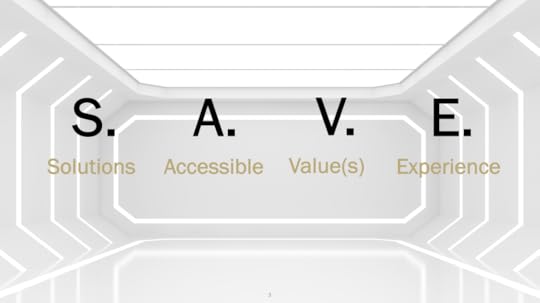 S.A.V.E.= Solutions. Accessible. Value. Experience.
S.A.V.E.= Solutions. Accessible. Value. Experience.Solutions
People and potential Clients look for solutions, but companies often focus on products, services, and processes.
This is understandable since the purpose of an organization is to provide products and services and often the way to differentiate oneself is by focusing on the special inputs (e.g., data), ingredients (e.g., saffron), processes (e.g., “bespoke”, “hand curdled”), approaches (e.g., some sort of diagram of how the company comes up with results) or organizational structure (e.g., “our special way of working and organizational structure that is silo-less, client focused and efficient”)
All of this is well and good and often necessary but never sufficient.
Because what the buyer is asking is “can you show me some cool shit instead of showing me how your colon works?”
Accessible
Today, most people are constrained for time and want things fast, friction-free and optimized for their personal situation.
Simplicity in understanding what is available.
Convenience in buying.
Flexibility in delivery and returns.
Optionality in payment terms.
Are our solutions easy to buy and ourselves easy to deal with?
For an organization this means being easily discoverable on all major platforms. Using language that is simple and free of buzz word bingo and jingo lingo. Being available to purchase or interact with across all channels and offering varied methods of delivery and payment.
People will not adapt to the way of the company, but the company needs to re-tool its spine to adapt to the way of the people.
Value(s)
Value is always a key since in addition to time, money is often a constraint for most.
This often requires competitive pricing but is not necessarily about selling out with the lowest price.
Ideally one finds a way to price the outcome versus the input.
Buying cheap pigs could lead to poisoned hot dogs.
Smart archers use fewer arrows and can get to the bullseye of solution faster, so quality has great ROI but often one must find ways to illustrate and numerate quality.
Some approaches include truly differentiated solutions or people where the result or experience are so clearly superior that premiums are justifiable.
It is important to note that Apple, LVMH, Disney and many others do not differentiate on price but value.
In addition, today like never before the values of a company or person matters.
Purpose.
A stance on ESG.
Approach to DEI.
Care and growth of employees and community.
All these now become ways to signal value and values.
Experience.
In the end people remember the experience and pay for the experience.
And much of business and marketing is creating seamless experiences or rectifying and correcting lapses in the experience.
Experiences have always been key but in the next few years as Web 3.0/The Third Connected Age scales with increasingly open, decentralized and composable systems, AR/VR interfaces, new organizational structures (DAO’s) and new currencies of trust and monetization (Blockchain driven tokens) it is likely to be the KEY differentiator
For a step by step guide on how to leverage S.A.V.E. click here
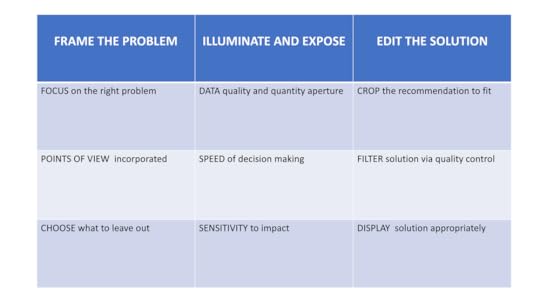 Unearthing Answers using a photography metaphor: Frame. Illuminate. Edit.
Unearthing Answers using a photography metaphor: Frame. Illuminate. Edit.The essence of photography
At its essence photography is driven by three variables:
a) Framing: What the photographer decides to focus on, how the camera is angled and positioned relative to the subject and what is left in and left out of the viewfinder.
b) Exposure/Lighting: This is a combination of aperture, shutter speed and how sensitive to light the film is (ISO speed)
c) Editing: Once upon a time with analog film only professionals had the tools of editing (darkrooms, chemicals, and papers) but today with digital capabilities of our phones we all can pre-edit by taking several test shots, give ourselves lots of editing options by taking a lot of pictures and then later with easy-to-use tools sculpt our pictures to our liking by cropping and filtering and more.
The essence of problem solving
The best problem solvers tend to be good at three factors:
a) Framing the problem by asking the right question: They want to know whether one is solving the right problem.
b) Getting the right input/data/facts so they can throw as much light on the problem: Can one get as much illumination as one can?
c) Interrogating and iterating the answer: The first answers tend to be somewhat right and often lec to additional questions or additional fine tuning before one reaches a more robust solution.
For a step by step guide on how to use the photography metaphor click here
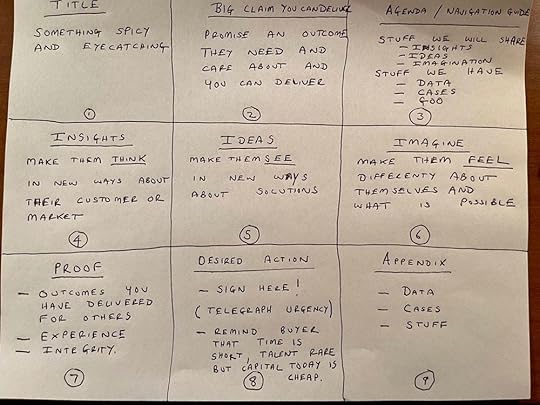 High Impact Presentations.
High Impact Presentations.A case can be made that most presentation decks are
a) Un-necessary.
b) Too long.
c) A celebration of process versus product.
d) A mechanism of management control.
e) A waste of talent, time, and treasure.
f) A placebo pill for what can be cured with a conversation.
It may be time to re-think presentation decks.
Why most decks should be no longer than 9 slides.Think of all the presentation you have sat through or produced. Many were fifty, sixty or hundred slides long. How many slides do you remember? How many stood out or made a difference?
Presentations are often un-necessarily long because:
a) We often confuse volume with quality.
b) Many people feel without a huge deck they cannot justify their expenses or point of view.
c) Often firms are paid by time exerted so they are incentivized to bloat and be baroque.
d) We often focus on how the colon works versus showing the cool shit by spending too much time about the process, the background, the history, the tools, the sources of data versus delivering the idea, insight, innovation, or imagination. If we need more than nine slides to tell our story, sell our point of view, or close a deal, we may not have anything truly convincing, differentiated, or interesting.
Over the years here is some learning gleaned from the best story tellers, salespeople, and communicators reduced to a simple exercise.
The best presentations are ones where you write the deck but never present or share it.See above or below for a visual of how to limit any kind of presentation to 9 slides.
Begin with a letter size sheet of paper and a pen or pencil.
Place the sheet so it is in landscape mode.
Pretend you are playing tic tac toe and draw two vertical and two horizontal lines.
You now are looking at a slide view of nine slides on a single piece of paper.
Slide 9 is the appendix slide where you will list supporting material and will be the last slide you fill in.
Slide 8 is the Desired Action slide which highlights what you want to get from the meeting/ have the person you are presenting to act on.
This is the first slide that you fill in since this is what the point of the meeting you are having is.
Then the focus of your work is slide 4, 5 and 6 which you may want to label Insights, Ideas, Imagination. What insights about customer, consumer, marketplace, competition will you be sharing that get your audience to THINK differently? What one two or three big ideas are you delivering that will make their customers or consumers SEE them differently? What provocations, perspectives, points of view are you communicating that will get your audience to FEEL differently about their business, their future or you?
The goal of slide 4, 5 and 6 is to make sure you get the action you are looking for on slide 8.
Slide 7 is the Proof on why you or your firm should be believed, and this is where you show or share the cool results you have driven for other people.
Now you are ready to write the opening slides 1, 2 and 3 which are very key. Slide 1 should be a title that will make your audience come to attention, slide 2 a promise or some other benefit or outcome you will drive (e.g. your firm will generate 20 percent improvement or x or y) and then slide 3 which is the agenda slide or navigation slide which notes that you will be sharing ideas, insights, imagination and supporting material….but are ready to jump into any section based on what your audience is interested in first or how you have read the room at the beginning.
Finally slide 9 which is the appendix of all the supporting material that the first 8 slides are built on and can include data, cases, and other stuff.
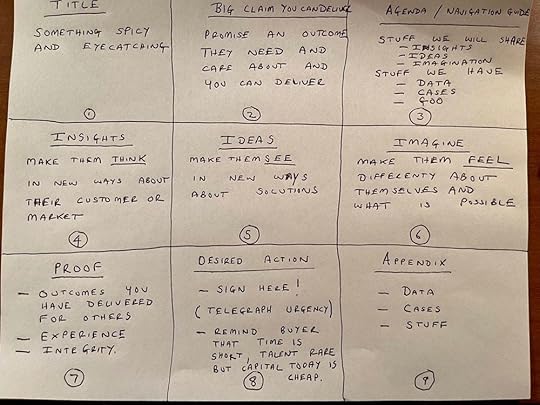
Once you write this out you will find that you can make the entire presentation often without the presentation and at minimum you no longer have a long ponderous deck.
Instead, we have perspectives, provocations, points of view, insights, ideas, imagination, promises of delivery and a warehouse of stuff they can rummage through assuming they are interested.
Try this approach.
For more on the 9 slide presentation click here
October 9, 2022
The Future is Elastic!
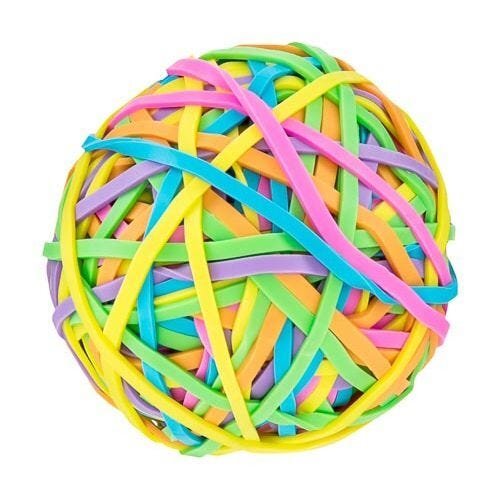
“The Future is ‘Plastics’” was uttered 55 years ago in1967’s groundbreaking movie “The Graduate”. The “plastics” industry then boomed for decades but “Plastic” also meant fake, or artificial, unnatural. The statement “The future is plastics” was also code for all things that needed to be changed.
Elastic.Today the one word would be “elastic”.
What is a simple definition of elastic?
Elastic, resilient, springy, flexible, supple means able to endure strain without being permanently injured. Elastic implies the property of resisting deformation by stretching.
The future is elastic.
People are increasingly living elastically in the way they shop, consume media, live, and work. They are stretching definitions and flexing and twisting.
The organizations that will thrive in the future will align with peoples’ new expectations and behaviors by being elastic in their structure and approach.
Those individuals most elastic in mindset who are ready to continuously iterate and adapt are more likely to thrive in transforming and changing times.
Source: Gartner
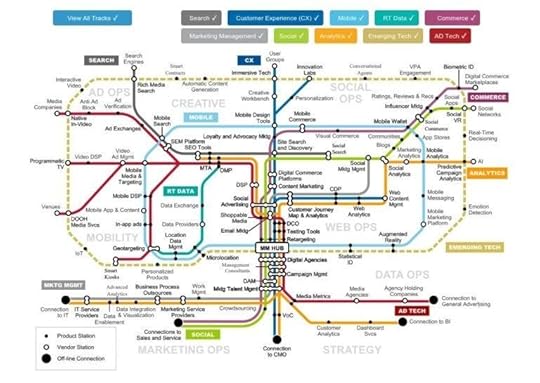
Source: Gartner
How people shop and consume media today are increasingly elastic.The Customer “Journey” or “Funnel” is no longer recognizable.
Once upon an imaginary time there was a purchase funnel with awareness, consideration, intent and purchase as its four key movements and one could map a consumer journey.
In a world of fragmentation, empowered customers with super computers in their pockets and mongrel media like Tik-Tok which collapse above the line with below the line, fuse offline and online commerce and destroy any line between search, e-commerce, video, social and mobile, businesses are dealing with millions of journeys beginning, ending and lurching all over.
The neat little boxes and orchestrated behavior have dissolved into a cacophony of improvised jazz as the Gartner chart above illustrates.
Elastic companies will need to be not just omni-channel across all analog and digital platforms but also across multi-verses as the future of AR and VR begin to scale.
Source: World Economic Forum and Upwork.
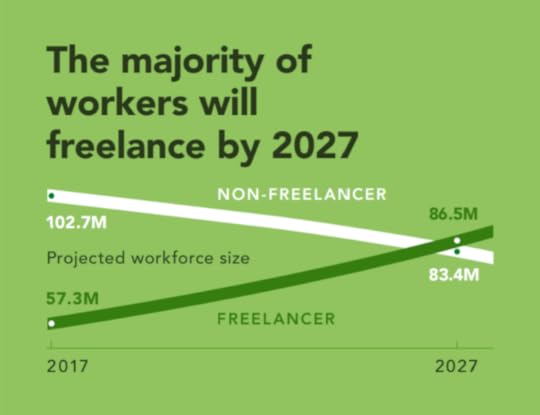
Source: World Economic Forum and Upwork.
How people will work increasingly elastically.Within five years projections suggest that most workers will have multiple employers.
Today we are living in a world of distributed and unbundled work (a process that began before Covid-19 and was just accelerated) across office, home, third places and event. A world where software, hardware and the Cloud allows many individuals to have access to the same technologies and platforms as large firms the nature of work is in flux. The future of employee will be a flexible combination of the full-time employee, the contract employee, the fractionalized employee and the free-lance employee.
In addition, in most countries with declining populations (pretty much everywhere outside of Africa and for a little while India) businesses will combine advanced technology and cast a wide net for employees who are increasingly diverse, older and distributed around a multitude of locations working for a varying number of hours. The work forces will span generations, cultures, working styles and mindsets like never before.
A multi-verse of talent is what companies will need to be prepared for.
Their big tent will need to be elastically stretchy offering a wide menu of ways to work.

Source: Carol Dweck
Success will require the need to stretch one’s mind and skill sets.The rate of change today is speeding up and unless one is constantly learning, adapting, and questioning the status-quo we could find ourselves like the frog in the boiling water who did not pay attention to the rising temperature till it was too late to jump out before being cooked!
Every modern successful organization and leader is a target for dis-intermediation if we do not stretch ourselves.
Satya Nadella re-invigorated Microsoft after a decade of slumber increasing its market capitalization fivefold in five years by stretching out to incorporate open source (GitHub), social media (LinkedIn), gaming ( Minecraft and now Activision Blizzard), expanding into Cloud ( Azure) while torching stack ranking (which pitted employees against each other which made no sense when connection and collaboration are key), dropped the Windows Operating Division (legacy roots that were poisoning the ability to see in new ways) and most importantly made sure that everyone in his leadership team read and learned about Growth Mindset from Carol Dweck.
If we do not upgrade our mental and organizational operating systems to adapt to a high velocity and increasingly connected world we will fail to thrive.
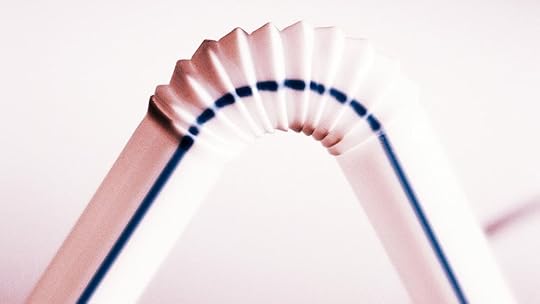 Becoming Elastic.
Becoming Elastic.Every individual, team and firm can become elastic.
Here are five ways to stretch:
Align with the future. Stop benchmarking against existing competitors and fixating just on current marketing platforms. Two years ago, many were convinced we were living in Google and Facebook world. While Google and Meta remain critical and are likely to do so for many years, we now have Tik-Tok, Amazon, and Apple that have scaled as significant marketing platforms joined by a plethora of commerce platforms like Walmart and Roundel from Target. In addition, many companies are creating their own connection platforms whether it be Marriott or McDonalds. It is no longer a two-horse race. As we enter the Third Connected Age of the Internet today’s eco-system will look simple.
Re-Think every aspect of the organization with a tomorrow lens.Like never before does the future not fit in the containers of the past. The future work force will be distributed, diverse, unbundled, empowered and older. They will be highly informed with many ways of monetizing their skills and often working for multiple companies. It’s no longer a question of if or when but how fast. Companies focusing on returning to the office (versus maximizing the benefits of in person interaction while ensuring flexibility) have not truly grasped the seismic changes in the future of work where this is just one of many challenges.
Accelerate speed of decision making and collaboration. Stretch one’s eco-system by incentivizing teamwork, being open to external partnerships and expertise and investing in upgrading skill sets and learning.
Recognize that in a world of machine learning and fragmented behavior, data will be exponentially more important. But not data itself but the ability to use data to illuminate opportunities, partnerships, and ROI by understanding patterns, combining math and meaning to drive data driven story telling and create an underlying infrastructure of intelligence and form that keeps the business focused and informed in a chaotic media, consumer, and competitive environment.
Combine roots and wings. Elastic means to stretch but not to be deformed. It is critical that as companies and individuals create new wings to soar into the future, they do not forget the roots that made them and will continue to make them who they are. Whether this be purpose, values, brand reputation or culture it is key to combine what’s next with what has been core.
Become elastic as the future becomes elastic.
October 2, 2022
A New ESG?
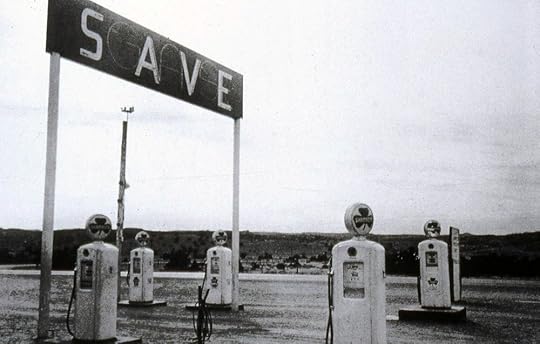
ESG has been important to companies and to investors though recently there has been some blowback from certain segments of the market on whether ESG is a feel-good, hard to measure, share-holder unfriendly and fuzzy goal.
This piece proposes that while ESG remains important a new ESG which is far more focused and therefore measurable, far more aligned with stakeholder value and more resonant with recent challenges needs to be acknowledged.
A new ESG.
 What is traditional ESG?
What is traditional ESG?A comprehensive definition from ADEC
Environmenta l risks created by business activities have actual or potential negative impact on air, land, water, ecosystems, and human health. Company environmental activities considered ESG factors include managing resources and preventing pollution, reducing emissions and climate impact, and executing environmental reporting or disclosure. Environmental positive outcomes include avoiding or minimizing environmental liabilities, lowering costs, and increasing profitability through energy and other efficiencies, and reducing regulatory, litigation and reputational risk.
Social risks refer to the impact that companies can have on society. They are addressed by company social activities such as promoting health and safety, encouraging labor-management relations, protecting human rights and focusing on product integrity. Social positive outcomes include increasing productivity and morale, reducing turnover and absenteeism and improving brand loyalty.
Governance risks concern the way companies are run. It addresses areas such as corporate brand independence and diversity, corporate risk management and excessive executive compensation, through company governance activities such as increasing diversity and accountability of the board, protecting shareholders and their rights, and reporting and disclosing information. Governance positive outcomes include aligning interests of share owners and management and avoiding unpleasant financial surprises.
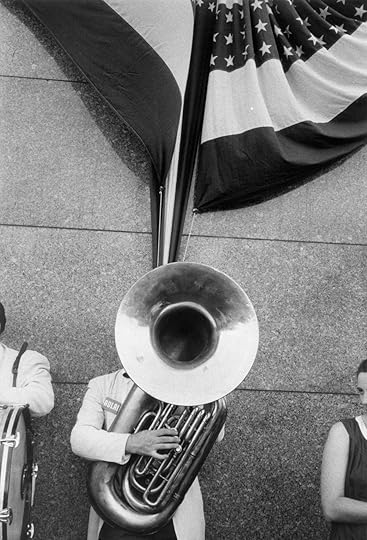 A New ESG
A New ESGESG is and will continue to be important but it covers so many areas that it often feels unfocused and is often a something that has a section in an Annual report, a check box that must be marked and though essential to a healthy business is seen as a “nice to do” or a “we have to do” versus it’s the competitive advantage that will drive increased customer loyalty, enhanced attraction and retention of talent and increased financial value to owners and shareholders.
Today amidst the triple crisis of health, economic and social unrest reflected in Covid-19, generational shifts and Black Lives Matter a more clarified and focused ESG should be Employees, Society and Government.
Every smart company understands that purpose, values, doing good needs a focus on ensuring that their employees are well taken off, the impact of their products and services is a net positive to society and that they work in harmony with Government which is an essential force holding society together and providing resources to its employees.

Employees: Is the company ensuring security for their employees by paying a wage that allows them to have disposable income after they cover living, health and student debt? Are you providing adequate health care and an environment that does not put their physical or mental health at risk? Does the firm have diversity across the company and do people feel safe in speaking up? Are they investing in training? Most importantly are employees a cost or also an asset? Learn more about what PayPal has done in this area.
The most critical asset a company really has is its workforce. Four decades of experience and years of research for my book Restoring the Soul of Business: Staying Human in the Age of Data indicate that its employees who create the brands, the ideas, the experience that make a company and the only way a company improves and transforms itself is by growing the skills and unleashing the talents of its people.
Today employees are more stressed than ever and over the next few years companies will be made or broken based on what they do and did in the early 2020’s. The Great Resignation and “Quiet Quitting” are symptoms where the real questions are why, how, where and who we work for?

Society: We have always lived in a connected world but over the past few years we are more connected than ever due to search that allows us to connect to information, e-commerce that enables us to connect to anywhere to transact, social networks that connect us to each other and mobile phones that connect us all the time. No wonder that the key connecting companies of Google, Amazon, Meta and Apple are four of the most valuable companies in the world.
While many of these were funded by advertising and ran AOS (Advertising Operating Systems) or iOS (Apple) the reality is they are now Society Operating Systems and must manage themselves and be governed as such. But increasingly due to their scale, scope, and balance sheets more and more companies from Walmart to CVS to Starwood’s decisions change society. What are the implications on Society of a firm’s business decisions? Often the secondary effects of optimizing for business creates huge problems for society.
How can a company understand both what the ill effects might be to society but as importantly what good can one do for society as Walmart unleashed its logistics often after a hurricane. Society is often the community that companies are based in, or their employees live and where their customers make their life. Every company has the potential to be a net good to society while also ensuring profitability and growth, but it needs to be baked into its strategy.
A focus on purposeful good for society and multiple stake holders attracts not just customers but talent who feel more connected and prouder of such firms

Government: If there is one thing that Covid-19 and its aftereffects has shown is that government matters. The quality of governance matters. Even the University of Chicago professors worry that government has been captured by business and wonders how to save Capitalism from the Capitalists. Government has been underfunded, demonized, and lobotomized via lobbying and a platoon of politicians who believe they are in the business of entertaining versus running things and solving problems. More government may not be the answer, but better government and a more respected government is usually key for a country’s health.
Businesses must recognize that earning billions and paying peanuts in taxes eventually means no infrastructure, no public schools and much more. Running to government when things get tough but starving them when things go well is not aligned with purpose values and other high thoughts that gallivant and roam free on corporate websites.
So, every corporate leader, HR honcho, purpose driven person in a firm should ask?
Are we looking after our employees?
Are we thinking about society?Particularly the negative impacts of our products and services?
Are we helping government including paying taxes?
The Employee, Society, Government focus will need to be done first to truly realize Environment, Social and Governance goals.
Today more and more customers care a lot about how companies are looking after their employees and caring for society. If one is a senior manager, it is important to spend some time with employees in their 20s and 30s and learn how they truly care about purpose, values, fairness and this impacts their decision to stay or leave your company and much more.
From Patagonia to PayPal companies that do the right thing have the right results.
By focusing on the story of people, society, and culture they deliver the results they need for the spreadsheets.
September 25, 2022
Identifying, Growing & Recruiting Talent.

Mosaic by Jason Dussault
Today like never before we are living in a world of rapid transformation and change.
New industries rise and fall and the inter-connected unstoppable forces of globalization, demographic change and technology twist and toss all of us.
In this landscape how do we identify the key skills that we will need from talent or hone our own skills?
What will remain relevant and in demand in an age of shorter and shorter half-lives of firms and business models?
And when we recruit talent particularly talent from outside how should we maximize the likelihood of fit and success?

Mosaic by Jason Dussault
The Six C’sSix key skills will be essential in the future.
Three of these have to do with individual competence (Cognition, Creativity, Curiosity) and three how we connect with each other and the world outside our minds (Collaborate, Communicate, Convince).
Very few people will be world class in all six areas, but we all need to grow to be very good in at least two in each area.
Many companies hire or tolerate unbalanced people who are ultra-strong in individual skills such as cognition and creativity but are terrible at collaborating or communicating and learn that these lop-sided folks almost never ever last.
Being great at collaborating and communicating but being lack luster in cognitive or creative and other skills also flames out as these folks do not earn credibility of insiders or clients. Similarly, brilliance without some basic people and communication skills always ends up poisoning cultures and eventually flaming out because the organization rejects these “smart porcupines”

Mosaic by Jason Dussault
The 3 C’s of Individual CompetenceCognition. Curiosity. Creativity.
Cognition is simply learning to think and keeping your mental operating system constantly upgraded. This requires deliberate practice and sustained work. Improved cognition is achievable.
But one must work at it and many of us are so swamped with keeping up with our daily workload that we do not invest in growing our skills and expertise. This proves to eventually lead to irrelevance as the needs for yesterday’s skill sets erode and one has not replaced them with a new set of skills for the future.
Creativity is connecting dots in new ways, looking beyond the obvious and this skill will be key as AI powered computers, data crunch and co-relate faster than we ever will.
To be human is to be creative.
Creativity is at its heart the way we deal with a world of change by adapting, evolving, and re-inventing.
We need to learn and feed this inside us. The future will be about data driven storytelling and not just data or storytelling and the ability to leverage modern machines and algorithms to unleash connection and meaning will depend on creativity.
Curiosity is simply being alive to possibilities, questioning the status quo and asking what if? Today the key competitor or opportunity in any category comes from outside it.
Curiosity may have killed the cat, but the lack of curiosity killed the careers of many people.

Mosaic by Jason Dussault
The 3C’s of ConnectingBeing cognitively gifted, creative, and curious will not be enough since we are living in a connected world where eco-systems, teams and linkages is how ideas are born, value created, and long-term careers forged. For these we need to hone and build and train for three other skills.
Collaborate: Collaboration is key to work in a world where API’s (Application Protocol Interfaces) are not just about handshakes between software/hardware but between individuals with different skills, teams in different countries, partners, suppliers and much more.
Communicate: Learn to write. Learn to speak. Learn to present. It may be so old school but watch the people who succeed, and they are good at communication. And all of these can be taught and learned.
But communication is not a one-way street and as important as it to write, speak and present it is as critical to be able to listen, to hear and to understand what others are saying with an open mind and a sense of empathy.
Convince: Every one of us is a salesperson regardless of what we believe our title is. This is true even if we do not sell anything at work. We must convince colleagues of our points of view.
We all must learn to convince and learn to sell.
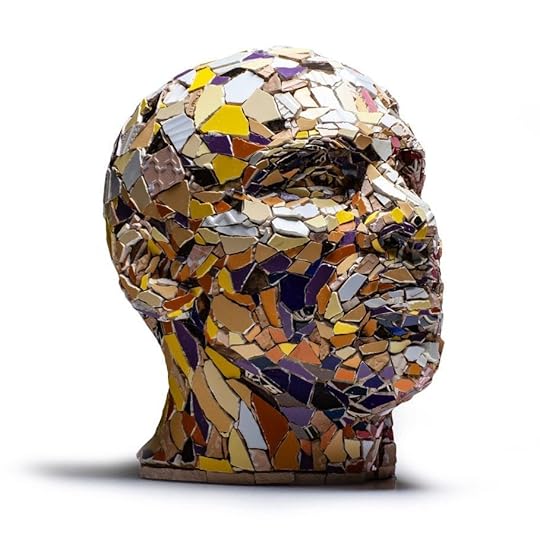
Mosaic by Jason Dussault
The 3 I’s of recruiting experienced talent from the outside.It is rare that a company can avoid hiring significant talent from outside if it is serious about transforming itself to change and grow. New skills, new mindsets and new blood enhances the corporate genetic pool.
But these hires are particularly fraught, and experience indicates that we need to evaluate for the 6c’s but also look for three other critical factors especially when recruiting for senior roles
These are a) Integration, b) Integrity, c) Impact
Integration is about how will the person fit in the culture of the firm.
It requires multiple interviews (Zoom and wherever possible in person) and ideally as many colleagues of the person being recruited should have an opportunity to be exposed to their future colleague. While often this is difficult it truly makes the on boarding and acceptance of the outside individual much easier
Too many companies bring in a wunderkind who either fails to adapt or is chewed up and spit out by the organization. While “Culture” may eat strategy for breakfast it honed its chewing skills by gnawing on the bones of outside talent.
Integrity and the Impact needs to be evaluated over time and require in depth research.
Integrity has never been more important and in today’s correctly sensitized environment this is not just about financial trust but dealings with people of different backgrounds among other things.
Impact on Business can be measured through financial results but as important is how the individual has built teams, grown people, and dealt with long term periods of stress or setback. Be careful of people who switch jobs every 2 or 3 years since it is highly unlikely, they architected the success they may claim.
Ex-bosses and ex-direct reports rather than colleagues and industry experts are usually the ideal people to interrogate since they can provide perspective, put things into context and provide a multi-faceted picture of the person.
In the end every one of us is responsible for our own careers. We should not outsource our future to somebody else. We should evaluate ourselves and our teams on the 6C’s and invest time and learning utilizing both company and external resources to keep honing and up skilling ourselves.
The future will not adapt to us.
We must adapt, grow, and transform ourselves for the future.
September 18, 2022
Diverse Faces Are Not The Same As Diverse Voices.

Photography by Jan von Hollebe n
All leaders face many challenges today, including organizational designs built for the past vs. the present, hierarchical command-and-control management styles that do not resonate with a new generation and employees who question their intent.
One key change that companies are making to address these issues is to ensure that they have a more diverse work force that will resonate with the marketplace and with their talent.
Ensuring diversity is not just the right thing to do, but is proven to be good for the bottom line as a representative workforce is a competitive advantage when talent is key, change is widespread and new ways of looking at things become critical.
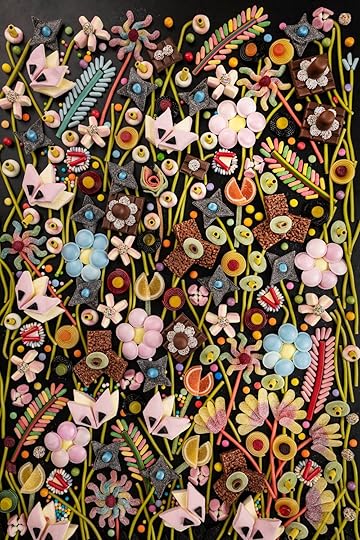
Photography by Jan von Hollebe n
Importance of diversity of voices.However, ensuring a diversity of faces is a necessary but insufficient step. Not only do companies need different faces around the table, but they also need diversity in thinking. We need to ensure that every person in a firm and around the table has a voice.
Most importantly, it is critical to have voices that can speak truth to power, question the status quo, call out potential issues and be heard without the risk of being punished.
Today some of the issues that need to be discussed including a) how the most successful companies and leaders self-defeat themselves by becoming deaf, dumb and blind to the reality around them, b) how mangers instead of re-inventing how they work and finding ways to maximize the benefits of in person interaction are coercing people back to the office breeding long term disdain and resentment and c) how The Third Connected Age of the Internet driven by AI, 5G, Blockchain, AR/VR requires a top to bottom re-thinking of business models.
There are voices that question and have suggestions on how to solve or mitigate these issues.
If such voices were listened to, many companies, such as Wells Fargo and possibly Boeing, would not have suffered their reputational and market valuation losses. There were people who knew there were issues, but they either kept quiet or were silenced or ignored.

Photography by Jan von Hollebe n
Speaking up. Speaking out.For true diversity it is key that people can call out the turd on the table when everyone else is celebrating what looks like a delicious brownie.
This is very difficult since the issues being called out are challenging. Financial impropriety. Cutting corners to make deadlines, which hurts product or service quality. Loathsome behavior by management. Incompetence in adapting to change.
In addition to the difficulty of speaking out, there is the risk of job loss, increased workload to fix the problem, career blackballing and, of course, the possibility of being wrong.
But speaking one’s mind is not just important in helping to avoid big problems or issues. It also creates an environment that helps day-to-day business.
Increases effectiveness of teams: The best teams feel connected to each other and feel a sense of empathy and trust. Straight talk helps foster these qualities.
Gets to the root of problems: Continuous improvement is critical in a fast-moving competitive age. This means identifying threats, weaknesses, and issues. These are much easier to do when voices are not stifled.
Fosters creativity and innovation: For great ideas and creativity we need trampolines of trust and an environment where disruptors can disrupt without having their lives and careers disrupted.
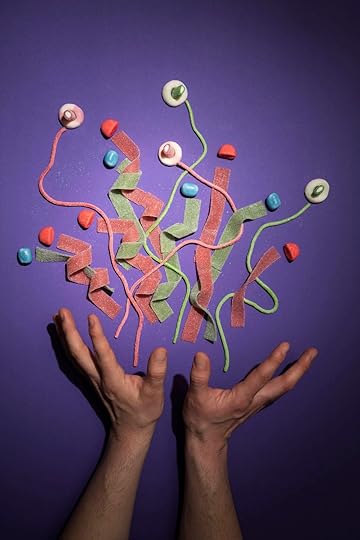
Photography by Jan von Hollebe n
How to unleash the voices within.Speaking up is difficult in all circumstances but particularly if management and the culture is not supportive.
Studying many companies and organizations, including firms as diverse as Pixar and the Navy Seals, has revealed some best practices that one can unleash to encourage diversity of voice.
· Ask everyone to speak, from the most junior to the most senior.
· Celebrate truth-tellers and status quo breakers when they are right with promotions and financial rewards.
· Bring in outside voices to share cases from outside and run workshops.
· After each project ask how things could have been done better.
Management should ask people to build a case for why the decision being taken by management is wrong. A postmortem before the project has begun allows people to say what they need to.
Being sensitive to diversity of voices as much as to diversity of faces will ensure long-term success for companies.



